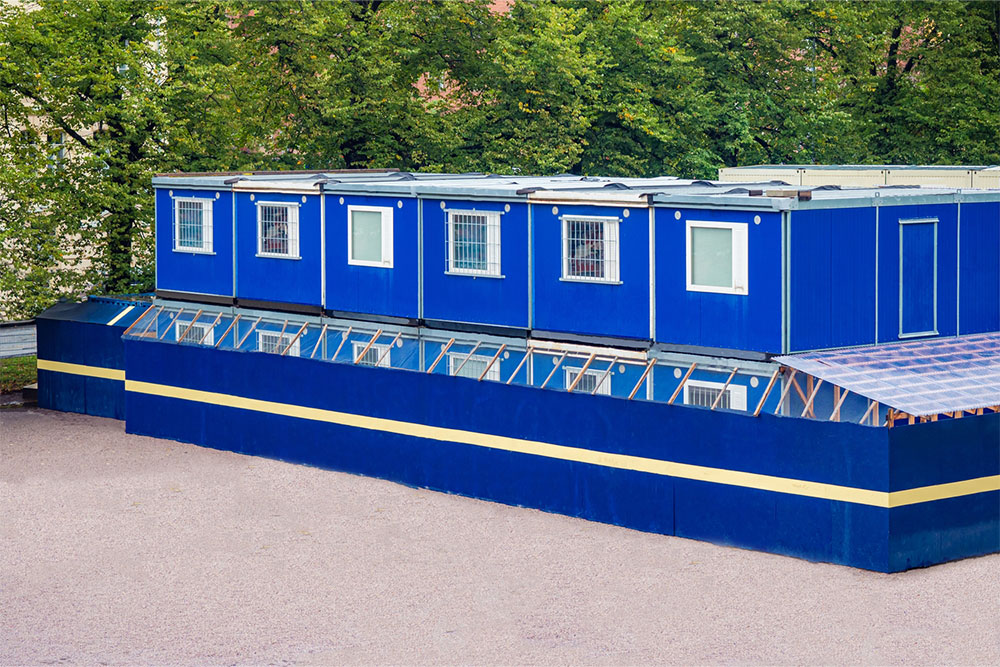
6 benefits of using prefabricated steel structures
Prefabricated steel structures involve fabricating steel components for construction off-site. These components are then transported and assembled on-site. This method differs from the traditional construction process, where materials are often assembled directly on the site. Owing to their versatility and strength, prefabricated steel structures have wide applications in industrial, residential, agricultural, and commercial buildings. With technological advancements and growing recognition of their benefits, these structures are likely to become the cornerstone of modern construction practices.
1. Improved safety
Working in the construction industry is considered high-risk due to the potential for accidents. So, companies are constantly looking to implement rules, tools, and processes that can make the job safer. Implementing the use of prefabricated steel helps companies achieve this goal. It reduces the risk of issues related to moisture, dirt, and various environmental hazards. Working with prefabricated steel in factory-controlled conditions creates safer work environments for the workers. Using prefabricated steel also allows companies to build structures as strong as traditionally constructed ones.
2. Cost-effective
The construction industry, like many others, often experiences an annual increase in operating costs. The increased expenditure can make it difficult for the companies to maintain their profit margins. The increased demand for labor and materials constantly drives up costs, resulting in narrower margins. Using prefabricated steel can lead to lower labor costs and, in turn, offset the amount companies need to spend on materials. Additionally, investing in prefabricated steel structures ensures the resulting work is strong, safe, and cost-effective. The differences in the cost of constructing a building in the traditional way and that of prefabricated steel structures can show a substantial difference in the final cost.
3. Quality control
When comparing the quality of regular on-site construction and the assembly of prefabricated steel, the latter tends to have better quality. Since the subassemblies are constructed in controlled factory environments, the resultant product is safer and free from weather and moisture fluctuations. When constructed in a factory, strict adherence to specifics and standards ensures uniform quality. On the other hand, when constructed on-site, the resulting product quality is based on the workers’ skills and efficiency. As a result, the product can have variations in the construction quality. In factory settings, even though workers build the products, they have to undergo standard quality checks during every step to ensure the final product is consistent.
4. Flexibility
The innovation of prefabricated steel structures has provided construction companies with a lot of flexibility. Since the sub-assemblies are built in the factory, it is easier for workers to transport them to the site and assemble them. Disassembling the product and reassembling it at different sites has become easier. This does not halt or hinder the construction work if there are any design changes or technical difficulties on site. In addition, architects, construction companies, and designers have greater design flexibility using prefabricated steel structures. They can design projects and realize them without having to curb their creativity. With increased flexibility for design, assembly, and a safer work environment, prefabricated steel has given people opportunities to innovate.
5. Eco-friendly construction
Construction companies traditionally require transportation and constant supplies of materials, which takes a toll on the environment. With depleting green land, this can be a huge concern for everyone’s quality of life. Prefabricated steel can solve this problem to an extent. Traditional processes require a lot of material and also produce significant waste. But with prefabricated steel, the impact on the environment is lower. Most leftover materials are recyclable in this process. Instead of the waste being added to the landfill, as in traditional construction practices, prefabricated steel waste is taken to the recycling centers. In addition, it provides better insulation than traditional walls, resulting in higher energy efficiency for buildings.
6. Time saver
Prefabricated steel shaves off significant construction time, saving companies money and labor. Some construction companies might even require half the time to finish certain projects compared to the time it could have taken to finish on-site work. Some of the time saved is because factory building eliminates the changes in timeline caused by changes in the environmental conditions. Since factories construct multiple assemblies simultaneously, it also saves the workers time by cutting out the steps they would have to follow when constructing the building on-site. With the shorter timeline, companies can take up upcoming projects sooner or even work on more than a couple of projects simultaneously.
Along with these benefits, there are some challenges associated with the use of prefabricated steel structures. One of the primary obstacles is the initial cost. Fabricating steel components in a factory setting can be expensive due to the need for specialized equipment. Additionally, transportation logistics, the need for precise planning and coordination, and the lack of awareness and familiarity with this construction technique are some of the challenges with this modern innovation.
- Previous Post
- Next Post